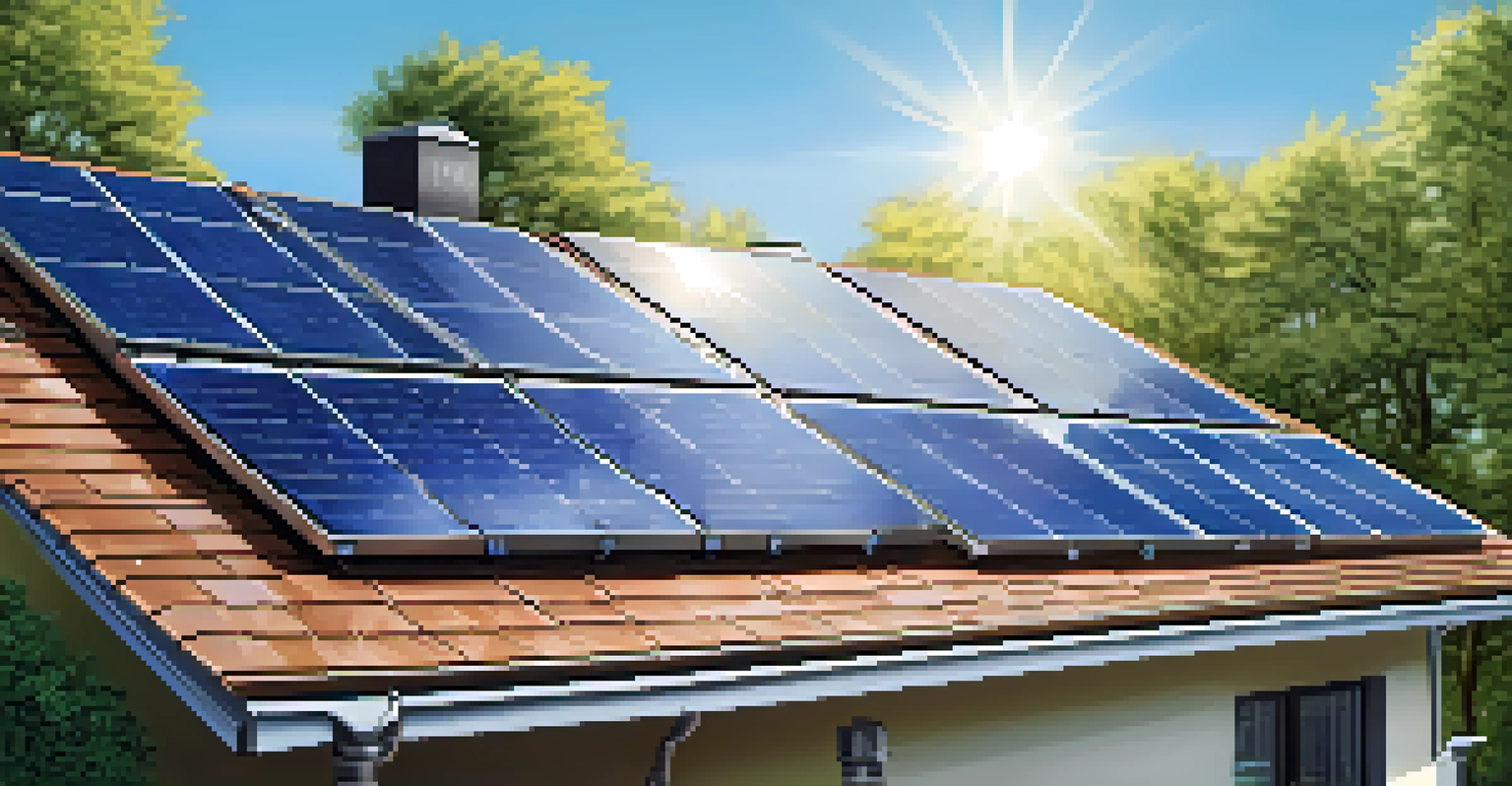The Role of Renewable Energy in Illinois' Sustainable Future

Understanding Renewable Energy Sources in Illinois
Renewable energy refers to energy derived from natural sources that are replenished at a faster rate than they are consumed. In Illinois, this includes solar, wind, and biomass energy, among others. Each of these sources plays a critical role in reducing dependence on fossil fuels and lowering greenhouse gas emissions.
The future will be powered by renewable energy, and it's essential for us to take action today to make that future a reality.
For example, wind energy has become a significant player in Illinois, with the state ranking among the top in the nation for wind energy production. This shift not only helps the environment but also boosts the local economy by creating jobs in manufacturing and installation.
As we look to the future, understanding these renewable sources will be essential for Illinois to develop a more sustainable energy plan that benefits both residents and the planet.
The Economic Benefits of Renewable Energy in Illinois
Transitioning to renewable energy sources can lead to substantial economic advantages for Illinois. By investing in green technologies, the state can create thousands of jobs in various sectors, including manufacturing, installation, and maintenance of renewable energy systems. This shift not only helps the environment but also stimulates local economies.

Moreover, renewable energy projects often bring in new investments and can lower energy costs over time. For instance, as more solar panels are installed, the price of solar energy continues to decline, benefiting consumers and businesses alike.
Renewables Boost Illinois Economy
Transitioning to renewable energy sources can create thousands of jobs and stimulate local economies.
Ultimately, the economic impact of renewable energy is a win-win situation, as it fosters job creation while contributing to a cleaner, more sustainable energy landscape.
Illinois' Commitment to Renewable Energy Goals
Illinois has set ambitious renewable energy goals aimed at achieving 100% clean energy by 2050. This commitment reflects the state's determination to combat climate change and transition to a more sustainable energy future. Such goals are not just numbers on paper; they represent a vision for a cleaner environment and a healthier population.
The transition to renewable energy is not just an environmental imperative; it is a tremendous opportunity for economic growth and job creation.
To meet these goals, Illinois is investing in a variety of initiatives, including expanding solar and wind energy capacities and improving energy efficiency programs. By focusing on innovation and sustainability, the state aims to position itself as a leader in the renewable energy sector.
These efforts highlight the importance of collective action, as both government and private sectors must collaborate to achieve these ambitious targets.
The Role of Policy in Advancing Renewable Energy
Effective policy is crucial for the advancement of renewable energy in Illinois. Legislative measures such as the Future Energy Jobs Act have laid the groundwork for the growth of solar and wind energy projects across the state. These policies provide incentives for both developers and consumers, making renewable energy more accessible.
Additionally, clear regulations help ensure that renewable projects are developed responsibly and sustainably. This includes taking into account land use, wildlife conservation, and community impacts, which are vital for fostering public support.
Illinois Aims for 100% Clean Energy
The state has set ambitious goals to achieve 100% clean energy by 2050, reflecting its commitment to sustainability.
In essence, strong policy frameworks not only facilitate the growth of renewable energy but also promote responsible development that benefits everyone.
Community Engagement in Renewable Energy Initiatives
Community engagement plays a pivotal role in the success of renewable energy initiatives across Illinois. Local residents are often the first to experience the benefits and challenges of new energy projects. Therefore, involving them in the planning and decision-making process is essential for fostering support and understanding.
For example, community solar projects allow residents to invest in renewable energy without needing to install solar panels on their properties. This not only increases access to renewable energy but also encourages local participation in the energy transition.
Ultimately, when communities are engaged and informed, they become advocates for renewable energy, driving further adoption and enhancing sustainability efforts.
Innovations Driving Renewable Energy Forward
Innovation is at the heart of the renewable energy revolution in Illinois. Advances in technology are making it possible to harness energy from wind and sun more efficiently than ever before. This includes improvements in solar panel efficiency and the development of more powerful wind turbines, which can capture energy even in lower wind conditions.
Moreover, energy storage solutions, such as batteries, are becoming more affordable and effective. These technologies enable the storage of excess energy generated during peak production times, making renewable energy more reliable and accessible.
Community Engagement is Key
Involving local residents in renewable energy initiatives fosters support and drives further adoption of sustainable practices.
As these innovations continue to evolve, they will play a crucial role in Illinois' journey toward a sustainable energy future.
The Environmental Impact of Renewable Energy Adoption
The adoption of renewable energy in Illinois is not just an economic or policy issue; it's also a crucial environmental endeavor. By reducing reliance on fossil fuels, renewable energy sources significantly lower greenhouse gas emissions, contributing to cleaner air and a healthier planet. This is especially important in urban areas, where pollution can have severe health impacts.
Furthermore, renewable projects often incorporate sustainable practices that protect local ecosystems. For instance, wind farms are designed to minimize impact on wildlife, and solar farms can be developed on previously disturbed land.

In summary, the environmental benefits of renewable energy extend far beyond just energy production; they contribute to the overall health of communities and the planet.